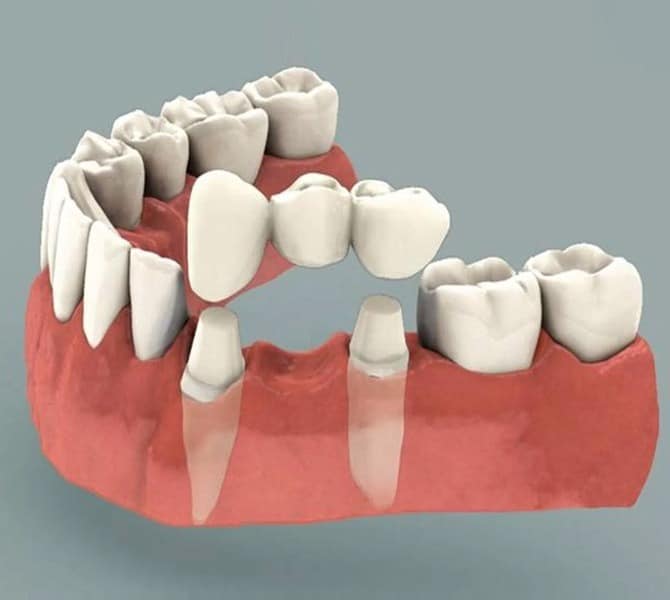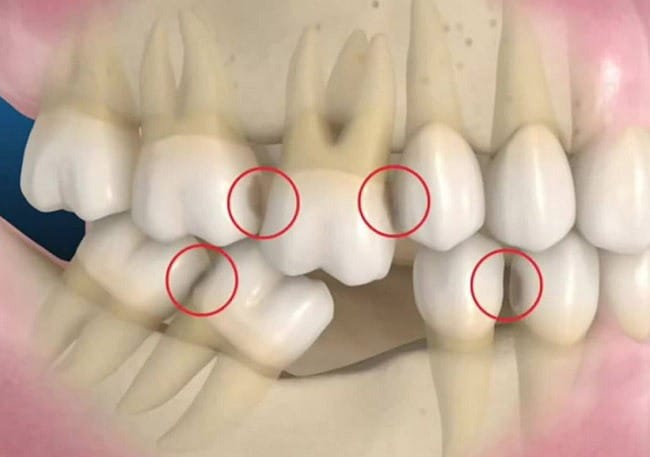Crown and Bridge
Crown
When a tooth needs a restoration, sometimes the best choice is a crown. A crown is a type of dental restoration which completely covers a tooth or dental implant. Crowns are made from many materials, which can be made to match your natural tooth color, so we will talk with you about the best type for your situation. We can then begin the steps necessary to create and place your new crown.
CEREC Crown
With a CEREC crown there is no biting on impression material for several minutes. Our digital camera can capture your full dentition in seconds and then transfer this information to the computer. Cerec in office milling enables us to create and place esthetic ceramic crowns or partial crowns in a single visit.
The procedure
The first step is to numb the area to make you comfortable. A digital image is taken of your teeth as they are when you arrive to our office, with an infrared camera that records the exact dimensions of your tooth and your bite on the CEREC computer. We remove any decay and shape the tooth/teeth with the handpiece, another digital image is taken of the prepared area so we can carefully design the custom restoration.
We then select the appropriate material in the matching shade for you. This material is placed in the milling machine which shapes it into a custom-fitted restoration.
The custom restoration is then baked for strength before we try it in your mouth, we can then add any final touches and bond or cement the restoration in place. Last, we check your bite, make any final adjustments, and polish it to a beautiful luster.
The Procedure
We remove any decay and shape the tooth. We then take a digital image of the prepared area so we can design the custom restoration for you.
We then select the appropriate material in the matching shade for you. This material is placed in the milling machine which shapes it into a custom-fitted restoration.
The custom restoration is then baked for strength before we try it in your mouth, we can then add any final touches and bond or cement the restoration in place. Last, we check your bite, make any final adjustments, and polish it to a beautiful luster.
Advantages To Singe Visit CEREC Restorations
- No Follow-Up Appointment
- No bothersome temporary prosthesis
- No messy impression material to make you gag
Like a real tooth
- Due to the translucency of ceramics, the dental prosthesis looks like a real tooth.
- In a ceramic dental prosthesis, no dark edges are visible as is so often the case in conventional crowns.
- Ceramic is very close to the hardness of the natural tooth, thus preventing wear of the tooth, which unfortunately so often occurs with other materials.
- Ceramic is very well tolerated so allergic reactions are largely excluded. This is not the case with some type of metal crowns.
Restoring A Tooth In Preparation For A Crown
When a tooth is severely broken down, there may not be enough tooth structure left to securely hold a crown. We use a core buildup to replace the missing portion of the tooth before placing the crown. Although there are several materials that we can choose from, the one we most commonly use is a composite resin that is bonded to the tooth.
The Procedure
We first numb the area to keep you comfortable. Then we make sure the tooth is free of decay. To prepare the tooth for the buildup material, if needed, we apply a mild etching solution. Next, we build up the tooth by carefully placing the buildup material. Some core materials harden on their own, while others are cured with a high-intensity light.
The core material and the tooth are then shaped to accept the crown. We then begin the steps necessary to create and place a new crown to cover and protect your tooth.
The Benefits Of Building Up A Tooth
Building up a tooth before placing a crown has several benefits. A core build
- supports the remaining tooth structure
- provides better stability and retention for the crown
- may reduce sensitivity by providing insulation between the crown and the inner pulp layer of the tooth
A core buildup is a necessary and important step before crowing teeth that have been severely damaged due to decay or fracture.
Placing a crown
Prior to beginning your procedure, we will choose a color that matches your natural teeth.
Then we remove any decay and shape the tooth with the handpiece.
Next, a small impression string is placed between the tooth and gum to gently push the gum away from the tooth structure. This step helps us get an accurate fit for your custom crown.
When the area is ready, we will remove the string, and take an impression or digital scan of your teeth (depending on the type of crown you will have). We use the impression or digital scan to create a crown that precisely fits your tooth and your bite.
It is sometimes necessary to place a temporary crown while your custom restoration is being fabricated.
Once your new custom crown is ready, we will try it in to assure you love the way it looks and feels before cementing the crown into place.


Bridges to replace missing teeth
When a tooth is missing, a three-unit bridge is one option you may consider for replacement. In a three-unit bridge, an artificial tooth is connected on each end to crowns. The crowns are placed over the neighboring teeth to hold the bridge in place.
There are several kinds of bridges, so we will talk with you about the best type for your situation. We can then begin the steps necessary to create and place your new bridge.

Why missing teeth need to be replaced
Teeth need each other for support. When you lose a tooth, the biting forces change on the teeth next to the space, causing the teeth to shift. In addition, the opposing teeth no longer have anything to chew against, so they may begin to extrude out of their sockets. These changes create places around the teeth that are hard to keep clean, so plaque and bacteria accumulate quickly. This accumulation can cause tooth decay and periodontal disease.
Changes in the bite can also put improper chewing forces on the shifted teeth, and this can lead to loose teeth and loss of jawbone, especially when periodontal disease is already present in your mouth. An uneven bite makes it harder to chew your food and may lead to grinding and clenching. A bad bite can also create painful problems with your jaw joint, the TMJ.
The Benefits Of A Three-Unit Bridge
When teeth are missing, a fixed bridge is a good choice for replacing them. A dental bridge is a great way to maintain a stable bite and restore your beautiful smile. Some of the advantages to placing a three-unit bridge, they:
- replace teeth for biting and chewing
- assist in clear speech
- help prevent teeth from shifting
- are supported by crowns that can serve as restorations for neighboring teeth that may have had damage or decay
When you need to replace a missing tooth, a three-unit bridge can be a functional, good-looking solution.
Determining the need for a bridge
When a tooth needs a restoration, we can often use CAD/CAM technology. The letters “CAD/CAM” stand for “computer-aided design” and “computer-aided manufacturing”. We can use this technology to custom-design and fabricate tooth-colored restorations, often times, all in one appointment. CAD/CAM restoration are often the best choice for a healthy, beautiful, and natural-looking smile.
We proudly make CEREC restorations with CAD/CAM technology for in-office design and manufacturing of zirconia crowns, bridges and veneers. For over 30 years, CEREC has provided technological precision, superior design, and excellent performance to thousands of practices.
CEREC restorations allow us to do more for our patients in less time while saving money as CEREC often eliminates the need for a second appointment. CEREC continues to be the innovation leader, allowing you full-contour zirconia crowns, often, in a single visit.
Placing a three-unit bridge
A three-unit bridge is custom-made for you, it can sometimes take two appointments to complete your bridge. Once the area is numb, we us the handpiece to remove any decay and shape the teeth that will support the bridge. Then we take an impression or a digital scan of your teeth. A model of your mouth is made from this impression or scan that will be used in creating your custom bridge that precisely fit your teeth and bite. In the event we would need two appointments to complete your bridge, we would use the model to also create a temporary bridge that you will wear while your custom bridge is being made.
Once your custom bridge is complete, we remove the temporary bridge (if one was used) and begin a series of steps to confirm the fit of your new bridge. We try in the final bridge, check the fit, and your bite. When everything is right, we cement or bond the bridge in place.




